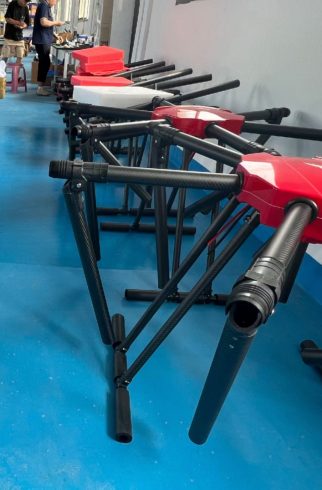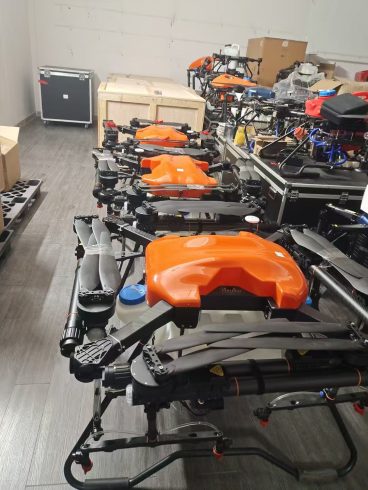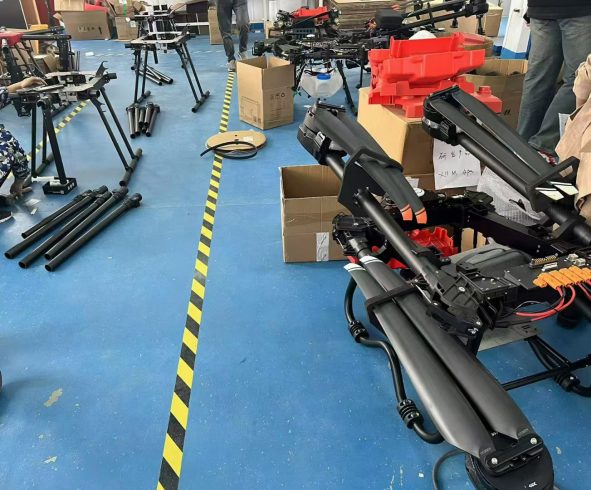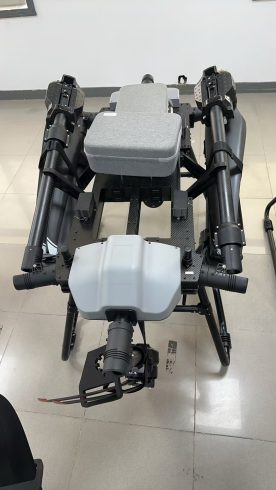![图片[1]-Drone Spraying Software Overview: Core Features, Technological Advancements, and Future Trends-msoen](https://www.msoen.com/wp-content/uploads/2025/04/edbbb52c8b184639-1024x576.jpg)
Introduction
Drone spraying software has emerged as a critical enabler of precision agriculture, empowering operators to optimize chemical application, reduce environmental impact, and enhance operational efficiency. As the adoption of agricultural drones surges globally, software solutions are evolving to integrate advanced technologies such as artificial intelligence (AI), real-time analytics, and IoT connectivity. This article provides a comprehensive overview of drone spraying software, focusing on its core functionalities, technological advancements, challenges, and future directions—all while maintaining a vendor-neutral perspective.
- Core Functionalities of Drone Spraying Software
Drone spraying software acts as the operational backbone of aerial application systems, combining automation, precision, and compliance tools. Its key features include: a. Mission Planning and Navigation
- 3D Mapping: Generates detailed field maps using satellite imagery or LiDAR data to identify terrain, crop health zones, and restricted areas.
- Flight Path Automation: Designs optimized routes for drones, ensuring full coverage with minimal overlaps and adherence to no-fly zones.
- RTK/PPK GPS Support: Ensures centimeter-level accuracy for precise nozzle control and compliance with regulatory buffer zones. b. Smart Spraying Controls
- Variable Rate Application (VRA): Dynamically adjusts spray flow rates based on real-time data, such as crop density or soil moisture, to minimize chemical waste.
- Obstacle Avoidance: Integrates with onboard sensors (e.g., cameras, LiDAR) to navigate physical obstructions and avoid off-target spraying.
- Weather Adaptation: Monitors environmental conditions (wind, humidity, temperature) to pause operations during unfavorable scenarios. c. Data Integration and Analytics
- IoT Connectivity: Syncs with soil sensors, weather stations, and farm management systems for data-driven decision-making.
- Spray Monitoring: Tracks chemical usage, droplet size, and coverage efficiency through real-time dashboards and post-operation reports.
- AI-Driven Insights: Identifies pest hotspots, nutrient deficiencies, or disease outbreaks using multispectral or thermal imagery. d. Compliance and Reporting
- Regulatory Alerts: Notifies operators of airspace restrictions, pesticide application deadlines, or no-spray zones.
- Audit Trails: Generates logs of flight paths, spray times, and chemical volumes for regulatory compliance and certification processes.
- Technical Architectures of Spraying Software
Most platforms adopt modular architectures to accommodate diverse farming needs:
- Cloud-Based Solutions: Enable remote access, scalability, and collaborative data sharing.
- On-Premise Systems: Prioritize data security for operations handling sensitive information.
- Edge Computing: Supports real-time processing of sensor data directly on drones or controllers, reducing latency.
- Key Technological Advancements
a. AI and Machine Learning
- Predictive Analytics: Forecasts pest outbreaks and optimizes spray schedules using historical weather and crop data.
- Image Recognition: Detects crop stressors (e.g., fungal infections, waterlogging) through multispectral analysis. b. IoT Integration
- Sensor Synergy: Combines soil moisture, temperature, and crop health data to refine spraying parameters.
- Automated Workflow: Triggers spray operations based on IoT-derived insights, such as soil pH imbalances. c. Swarm Intelligence
- Coordinated Fleets: Enables groups of drones to operate autonomously in sync, covering large areas efficiently.
- Task Delegation: Assigns specific zones or tasks to individual drones based on real-time data.
- Challenges and Solutions
a. Data Overload
- Challenge: Managing vast datasets from multiple sensors and platforms.
- Solution: AI-driven analytics to prioritize actionable insights and simplify decision-making. b. Interoperability
- Challenge: Compatibility gaps between drones, sensors, and farm management tools.
- Solution: Open API frameworks and standardized data formats for seamless integration. c. Cybersecurity Risks
- Challenge: Vulnerabilities in cloud-based platforms or connected devices.
- Solution: End-to-end encryption, blockchain-based data verification, and regular security audits.
- Future Trends in Drone Spraying Software
- AI-Driven Autonomy: Self-optimizing systems that predict spray schedules and adapt to dynamic field conditions.
- Digital Twins: Virtual replicas of farms for simulating spray scenarios and optimizing resource allocation.
- Blockchain Traceability: Immutable records of chemical applications to support sustainability certifications (e.g., organic farming).
- 5G Connectivity: High-speed data transmission for real-time swarm coordination and live operator feedback.
- Sustainability Algorithms: Tools to minimize carbon footprints by optimizing flight paths and chemical use.
- Case Study: Enhancing Rice Farming Efficiency
In a Southeast Asian rice-growing region, software-powered drones reduced pesticide use by 30% while increasing yields by 15%. The system combined AI pest detection with variable-rate spraying, ensuring chemicals were applied only to affected areas. Real-time weather adaptation further minimized drift risks during monsoon seasons.
Conclusion
Drone spraying software is revolutionizing agriculture by merging automation, data intelligence, and sustainability. From optimizing chemical use to ensuring regulatory compliance, these tools empower farmers to work smarter and more sustainably. As AI, edge computing, and swarm technologies mature, software will play an even greater role in shaping the future of precision farming—one algorithm at a time.
Keywords: drone spraying software, precision agriculture tools, variable-rate spraying, IoT farming solutions, AI in agriculture, compliance software for drones.












暂无评论内容